Scoazer — plate 4
The Arti che vanno per via nella città di Venezia (1753, 1770, 1785, etc.), by Gaetano Zompini (1700–1778), contains sixty engravings of common, mostly poor people, peddling their trades on the streets of Venice in the mid-1700s.
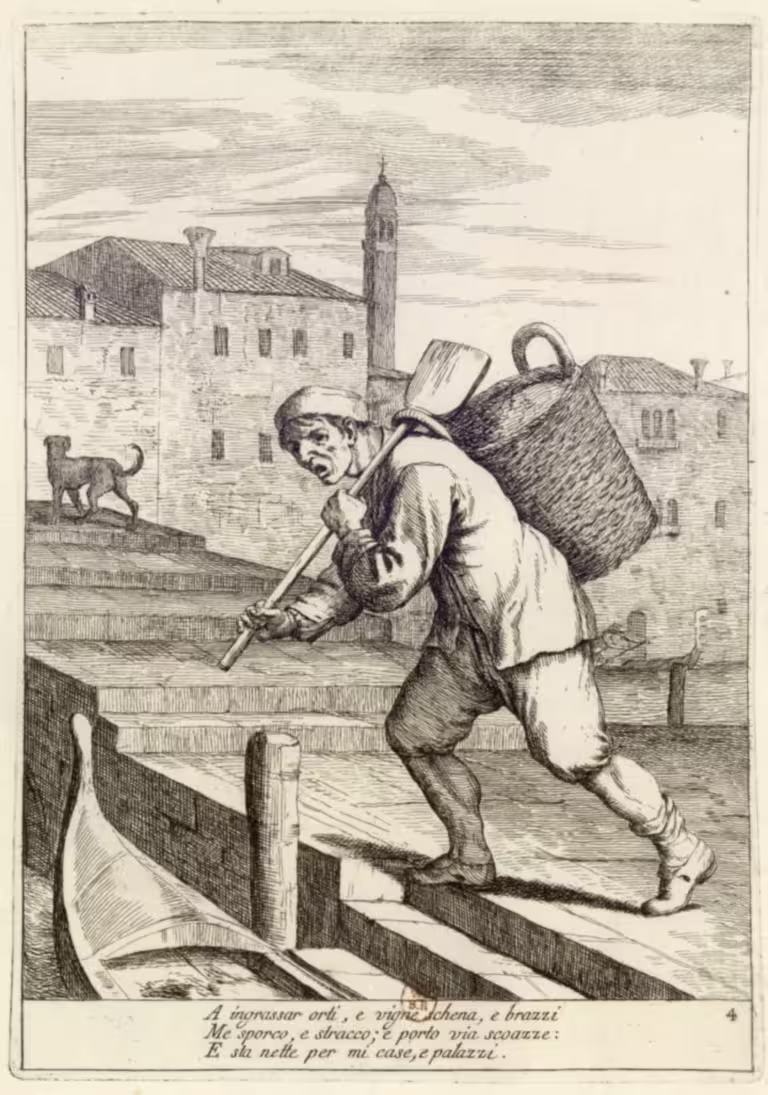
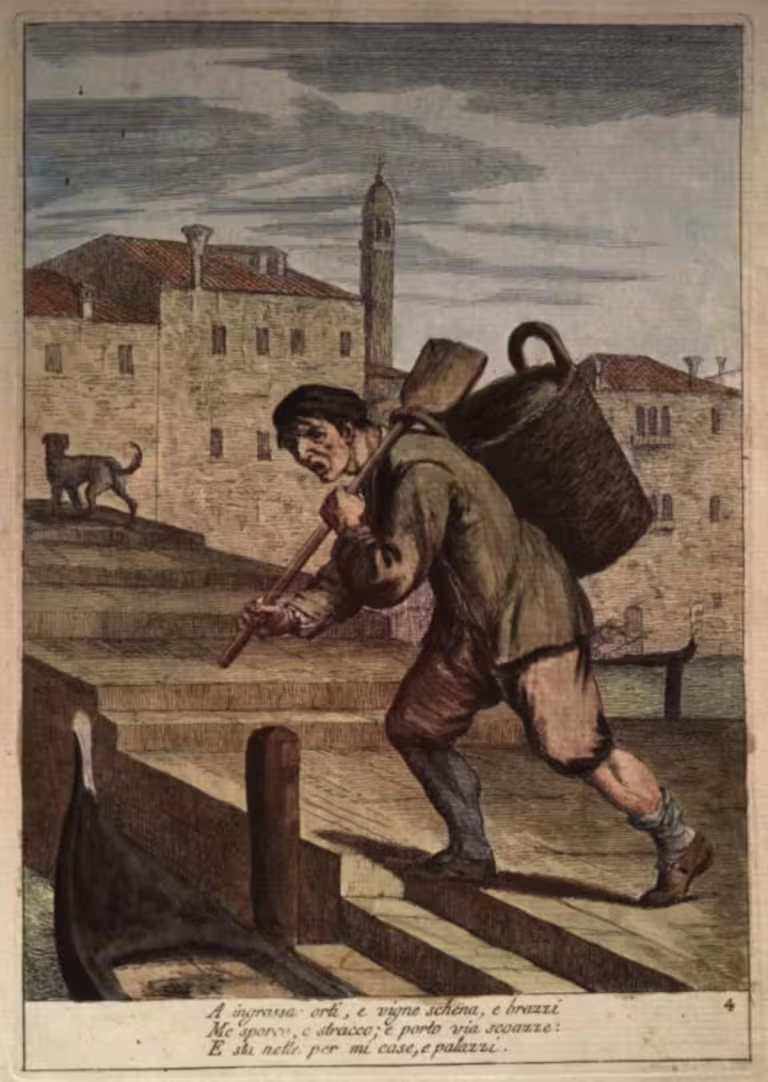
Text
A ingrassar orti, e vigne schena, e brazzi Me sporco, e stracco; e porto via scoazze: E sta nette per mi case, e palazzi.
Translation
Fattening orchards, and vineyards; back and arms
I dirty, and tire, and I take away the rubbish:
And thanks to me, the houses and palaces are clean.
Notes
The scoazzér was a rubbish colletor. Scoazze means rubbish, and the word is still in common use today in Venice.
Venice used non-biodegradable rubbish to prepare muddy areas for building, or for enlarging lagoon islands. The city had a system of scoazzere — designated areas for collecting such refuse — for this purpose.
The ‘fattening’ of orchards and vineyards refers to this usage of rubbish to reclaim land.
In Venetian, stracco or straco means tired.
See Boerio (1829), entries SCOAZZE, SCOAZZER, SCOAZZÈRA and STRACO.
All images
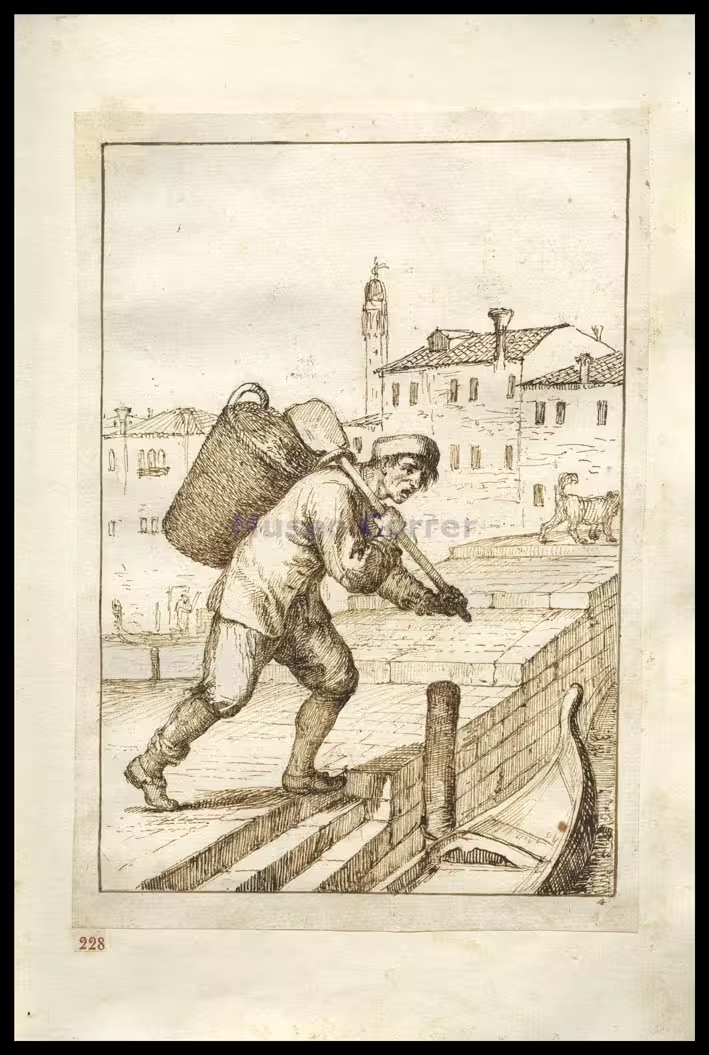
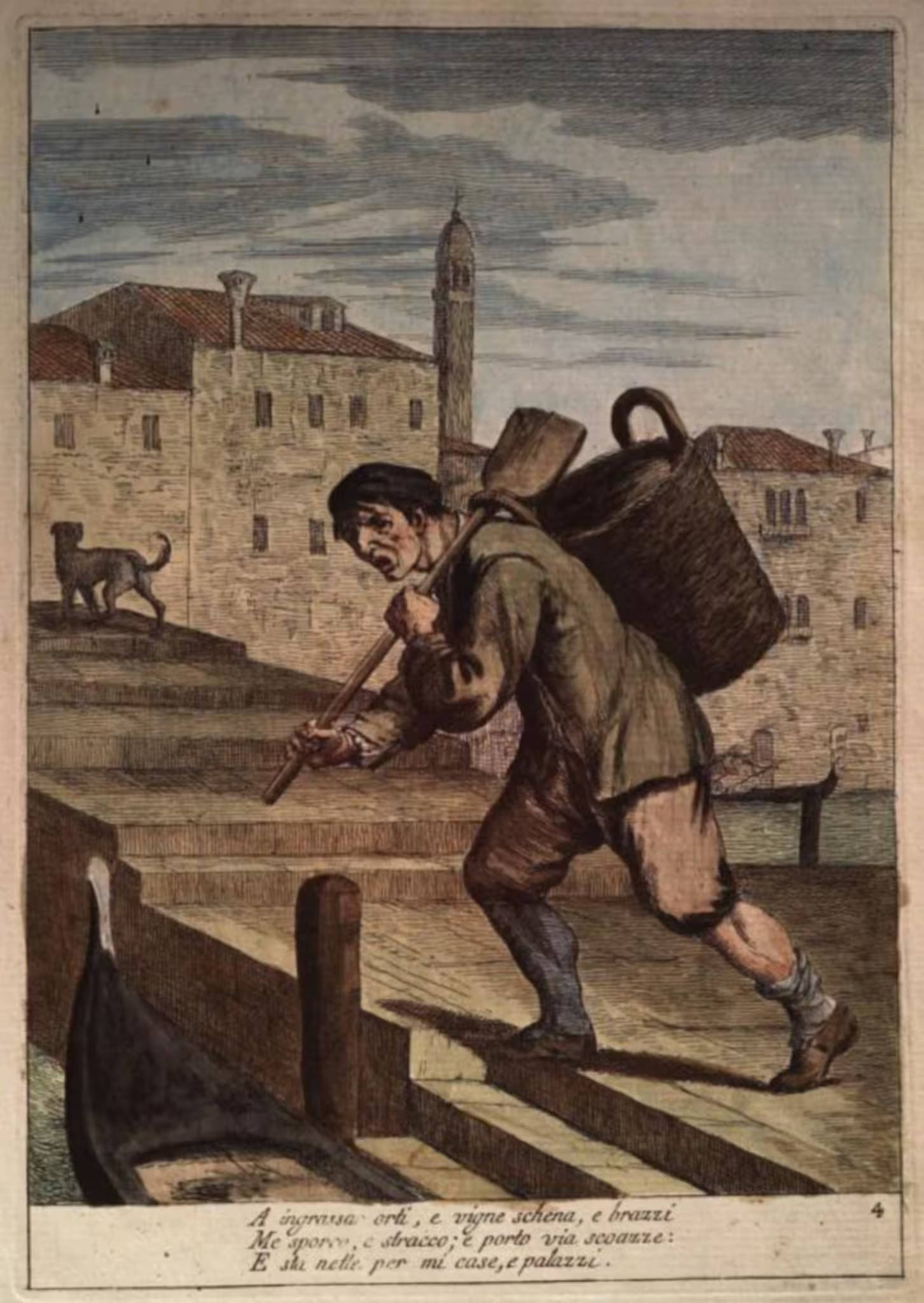
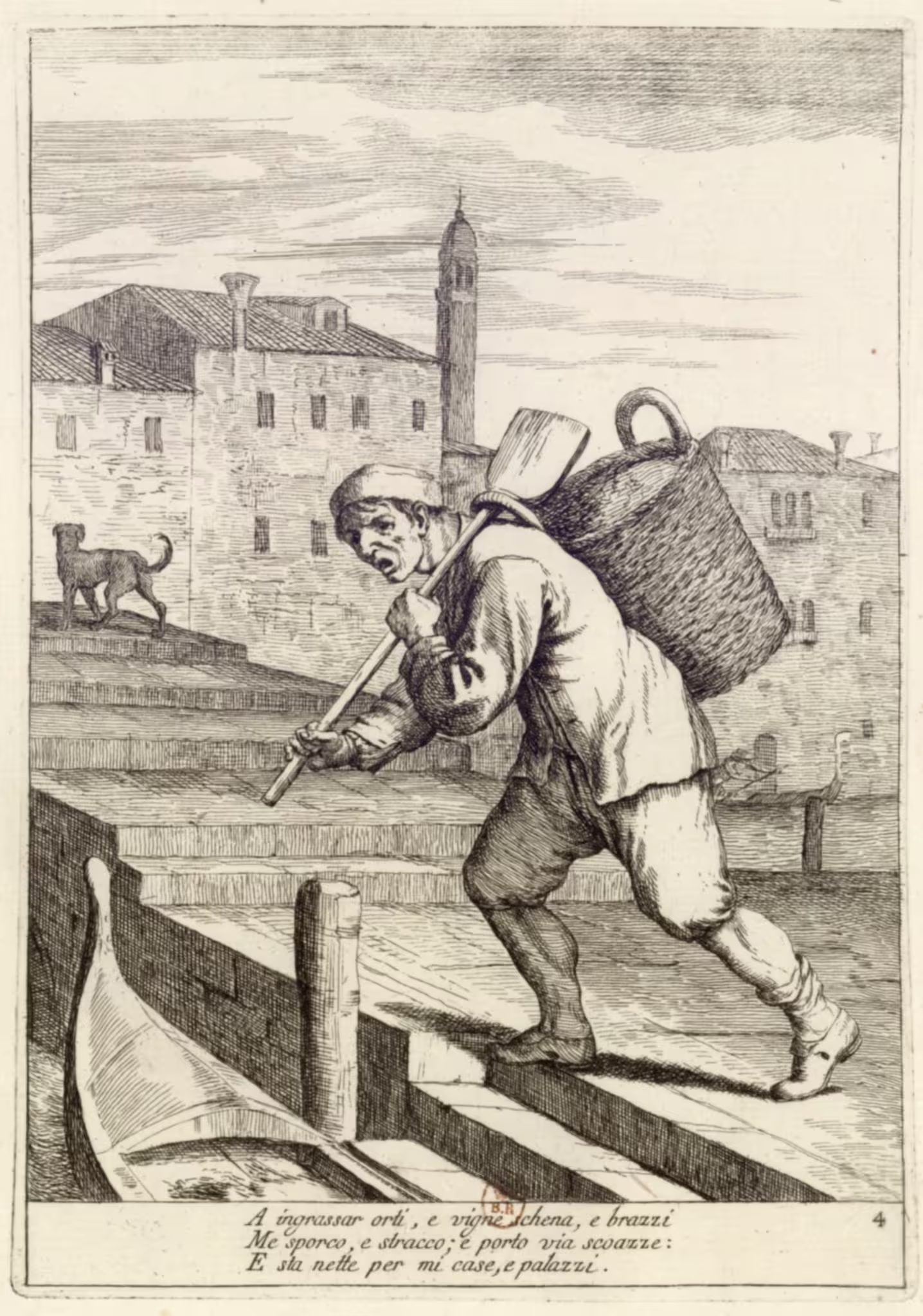




Leave a Reply